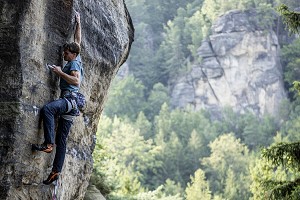
Modern sport climbing harnesses have come a long way from the weighty thick webbing offerings of the past that featured chunky buckles and a groin-wrenching lack of comfort. In order to get there though, the whole process has had to undergo a full cycle of development as new features were added to the simple webbing harness such as padding, heavier gear loops and more buckles for adjustment. These heavy harnesses had everything we needed for climbing purposes but weighed a ton, and also were still not as comfortable as they could be.
The major breakthrough to lighter harnesses came when climbing companies integrated the webbing waist belt with the padding, either by using new materials and/or by splitting the webbing. The load is spread across the waistbelt and leg loops and the harness is comfortable if you fall or sit in it. Material has been eliminated, so reducing the weight of the harness but without compromising comfort and strength. The lightweight harnesses in our review range between 260g and 400g, whereas they used to be twice that. Strength has not been compromised and all these harnesses conform to UIAA standards (UIAA 105). Add in better ergonomic design, some breathability, better designed gear loops and it is clear that harness design has been improved.
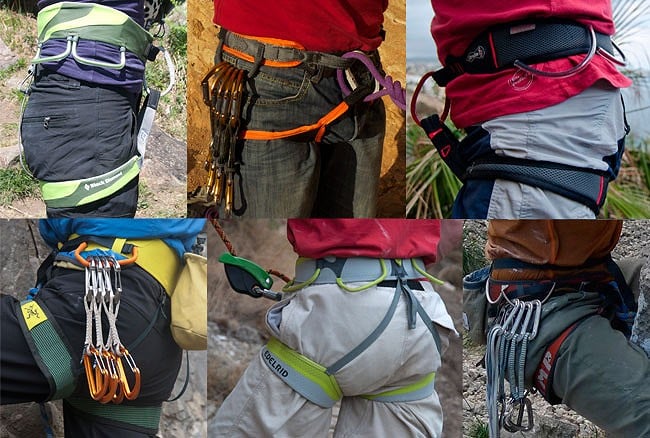
For our test we contacted the major manufacturers and asked them for their specialist lightweight sport climbing harness. We then took these harnesses to the Costa Blanca on a trip and tested them out. Testing was continued through the winter at walls and other sport cliffs - the results are below. The testers were Alan James, Mark Glaister, Stephen Horne, Mick Ryan, Sarah Stirling and Phil Baker.
Some Notes on Harness Choice
A harness is like a rock shoe, you need to try it on before you can be sure that it is suitable for you - and this usually means a visit to a shop.
Weight - Decide how vital weight saving is for you. As a general rule the lightest sport climbing harnesses sacrifice a little in comfort, and a little more in durability, so if you plan long days, multi-pitch sport routes, or want an all-round harness then consider something a bit more substantial.
Gear loops - The choice tends to be 2 or 4, but some harneses, like the Mammut Zephyr and C.A.M.P. Air, have two main loops and two lesser loops. A harness with only 2 gear loops is not good for trad climbing, or multi-pitch sport climbing, if you intend to buy just the one harness. Most of the gear loops are formed to hold the gear away from your harness but some aren't. Some designs are moulded to push the gear to the front when you remove a quickdraw.
Fastening - The standard nowadays is self-locking buckles with little variation between them. The only thing to watch out for is the tag-end of the belt which tends to be longer than you might expect to allow the wriggle room to get the harness over your hips without un-threading it. This is more pronounced for the narrow-waisted people (women) and can leave quite a long tag-end. The methods for tucking the tag-end away vary and, in the harnesses we tried, some of them were poor in this respect.
Fitting Tips
Check the rise - this is the distance between the leg loops and the waist belt and it varies between manufacturers and is different for women's harnesses, women are longer from waist to thigh (the rise is longer proportionally). The correct rise should see the harness sitting comfortably on you allowing freedom of movement and so there is no pulling between your leg loops and waist belt. If there is some pull on your leg loops, slacken the rear elastic loops that join the leg loops to the waist belt or the opposite if they ride too low.
Walk around in it. Do some high kicks and feel for it pulling on you indicating it is probably small and might need adjustment. Most shops have a hanging belay set up - use it and feel how your legs feel after a few minutes sitting. Can you re-adjust your position easily to lessen the strain on one section of your leg?
Women's Versions
Women generally have a smaller waist-to-leg-loop size (leg-loop-to-waistbelt ratio) and a longer rise. Women also wear their harness on their waist whilst men wear them on the hip. Most harness manufacturers now produce women's harnesses but in many cases the adjustability of the harness makes this unnecessary. The table at the base of the article indicates if there is a women's version available but it shouldn't be assumed that the versions which don't offer female versions are by definition not suitable.
When to Replace a Harness
Most manufacturers say 5 years of normal use, then get rid of it. If you are using your harness every weekend, consider replacing it after two years. It is a life-saving piece of kit and old harnesses have failed on climbers with fatal results. If you are using it a lot then consider getting two harnesses, one for sport and one for trad and alpine. Always pay special attention to the wear and tear on your belay loop.
Petzl Hirundos Ultralight
Petzl's ultra-light, high-end climbing harness is an eye-catching piece of kit: slightly metallic looking grey/silver trimmed with very bright orange webbing and a lime green belay loop. Quite a colour combination! Weighing in at 300g for the medium size, it lives up to its name - being as light as a bird. The waist belt and leg loops appear on first inspection to be composed solely of woven mesh, but this covers the internal closed cell foam internal 'padding' that gives the harness an increased level of comfort and rigidity.
The waist belt's internal frame of closed-cell foam is cut away, allowing the breathable woven mesh to wick away moisture. I found this to be a surprisingly useful feature when using this harness in hot conditions both indoors and out. The other harnesses that I use have a tendency to hold moisture and remain damp when not dried out of the sac, especially when they have been used day in and day out.
The belt is closed by a single pre-threaded buckle that works smoothly, both when cinching in and releasing. The lime green belay loop looks on the thin side, but feels substantial enough. It is made of Dyneema-Polyamide and the vivid colour is said to aid proper tying in.
The Hirundos has four generous gear loops; the front pair sitting below the waist-belt whilst the rear pair is set higher on the belt. All the gear loops are stiff and covered with webbing. The front pair have a ridged attachment to the harness; the rear pair are articulated. There is plenty of racking space for an average trad rack and in 'sport mode' the quickdraws sit well on the front pair of gear loops and are easily clipped on and off. The front gear loops comfortably hold 7 quickdraws each.
There are also 2 extra loops incorporated into the harness between the gear loops, which allow you to feed a crab through and offer even more gear storage although it is not clear how useful this would be squeezed between the other loops and in a vertical orientation (see strip photo above).
The leg loops have an elastic gusset, which gives some leeway for sizing and helps hold them high on the thigh in conjunction with elasticated rear leg loop straps. The rear leg loop straps are adjustable with a single pull and also detachable from the waist belt via a hook at the rear (fiddly to use). As with many elasticated rear leg loops I found that they worked loose and needed to be re-adjusted on occasion. The leg loops are not detachable so for those with an abnormal waist to leg ratio problems in sizing may well be a deal-breaker.
Out on the crag, when used on sport climbs and at the wall, the Hirundos performed well. I hardly noticed that I had it on and when hanging around tying in or working a move the comfort was good. When I fell I remained in an upright position and there was no cinching of skin or discomfort. In trad mode the Hirundos was adequate although after a half hour hanging on a stance on Esk Buttress I would have definitely preferred a little more padding and width in both the waist belt and leg loops.
For another take on the potential of the Hirundos take a look at the UKC review by Es Tresidder.
Summary – The Hirundos is a very light sport climbing harness with an uncomplicated design and some nice touches, such as the wicking nature of the waistband.
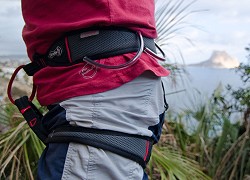
Wild Country Elite Ultralite Ziplock
Wild Country's super-light harness designed for both sport and trad usage. The harness has an appealing colour combo of grey with a black webbing trim and red detailing, along with a red and white belay loop, plus some additional detailing and logo in an Aztec style design. The harness looks sleek - the 'Super-ergo' waist belt is smoothly cutaway on its sides, leaving greater width at the back and toward the front of the harness. This cutaway design combats any restriction of movement when turning and bending, while also cutting down on the weight of the harness.
The Elite Ultralite weighs in at 336g in a medium size and when worn is hardly noticeable - a great harness for red-pointing. The closure of the harness is simple with the ziplock buckle. A good design feature is that the belt tucks into elasticated loops depending on the girth of the user.
Both the waistbelt and the leg loops are slightly padded. The leg loops' rear adjustment straps are elasticated and individually adjustable as well as unclippable, allowing the seat to drop. Adjustment of these is quick and easy both when the harness is off or on. The leg loops have an elasticated strap at the front that allows for variation in leg girth and also lightly holds the leg loops up on the thigh.
The belay loop is on the thin but reassuringly substantial side and the tying-in/belay loops on both the waist belt and leg loops have a red wear indicator that will show through when the harness needs replacing. There are 4 gear loops that are made of webbing with a clear plastic tubular sheath and are angled toward the front of the harness. There is plenty of room for 7 or so quickdraws/karabiners on each gear loop.
I have used this harness on and off for around 6 months for both sport climbing and trad climbing and have found it excellent. It shows little sign of wear and when falling, belaying and hanging for shortish periods on steep rock, it is comfortable. The harness is perfectly adequate for trad climbing use, the gear loops having plenty of room to accommodate a reasonably-sized rack and the waist belt stayed high on the hips even with a full (British) rack of cams, wires and quickdraws.
However for routes that require a lot of hanging belays and or a large rack I would recommend a harness with wider leg loops and waist belt as the leg loops are quite thin and started to cut in to the underside of the thigh when hanging for extended periods (3-5 mins+).
For more information see the following UKC review by Lou Neill.
Summary – A well-designed and sleek-looking lightweight harness that performed well when used for both sport climbing and trad climbing where a normal rack was all that was necessary and little time was required to be spent on hanging or semi-hanging stances.
C.A.M.P. Air
The C.A.M.P Air is the lightest harness we looked at weighing in at just 260g (M). This full strength harness is ergonomically designed, wafer thin and well-ventilated. Construction-wise, the fixed leg loops and waist belt are made from perforated 2mm EVA foam with soft polyester mesh on the inside and a more durable mesh on the exterior. The structural integrity comes from thin webbing sewn at the edges of the foam (also called the binding). The exterior mesh started fraying a little after a short time, which didn't look great but it didn't compromise the strength of the harness.
The harness is comfortable to fall in and, although no long falls were taken, it was tested with some short sport climbing falls, plus long sitting sessions on a multi-pitch sport route with hanging belays. In all cases the lack of any traditional thick foam padding made no difference;, because of the design the load gets distributed across the waist belt.
On the waist belt the edge webbing is sewn to the buckle tape to which there is a pre-threaded metal buckle making adjusting the waist belt very easy. The belay loop is what C.A.M.P call a 'No Twist' belay loop - this has a smaller reinforced loop for your screwgate carabiner that holds it firm so avoiding any cross-loading. Cross-loading carabiners considerably weakens them.
The racking system is simple, 4 gear loops, two plastic-coated, taking up to 16 quickdaws comfortably. It also allows it to be used for trad climbng if required. Whilst two of the gear loops are plastic coated and stand proud of the harness facilitating racking, the other two are just pieces of cord. It would have been better if these were also plastic coated.
For a more in-depth review of the AIR take a look at this UKC review by Mick Ryan.
Summary - The AIR is a good lightweight harness which provides excellent comfort. The finishing isn't perfect and the secondary gear loops are cord making it less useful as a trad harness.
Edelrid Smith
The Edelrid Smith is not their lightest harness (400g), but it is the one aimed at the lightweight sport climbing market (they do offer an ultralight Loopo harness, which is aimed at indoor and competition use). The Smith comes in the standard Edelrid green colour and comprises of a stiff but thin waist belt with similar fixed leg loops made of their Tri-laminate technology. This gives a solid-feeling harness while maintaining comfort with good load distribution. The trade off for this more substantial feel to the harness is that it is a little heavier than its competitors and suffers a bit in terms padding comfort, although it is still perfectly acceptable.
The harness offers four gear loops which are made from stiff loops covered with a nylon webbing finish. They have been angled well to allow easy access and are also angled to tip the gear to the front which is a nice touch, and the front loops hold up to seven quickdraws on each side, with room for some other kit on the extra two loops. The presence of four gear loops means that the harness could also be used when trade climbing. There is also a fairly pointless chalk bag tag since most people will want their chalk bag higher on its own belt allowing them to swing the bag around when required.
The single-buckle locking system is similar to those found on other harnesses, however in a curious twist the buckle has been swapped so that you pull the close tag back towards your belay loop. This is actually not a great set-up since, depending on how the fit is, you can end up with the belt tag end flapping around your belay loop and knot with only a small plastic clip to tuck it away. I ended up doubling back my tag-end into the clip which usually, but not always, held it out of place. It did seem that, had the buckle been fitted the other way, then it would work just as well without these small problems and I couldn't see a benefit of having the buckle this way round.
The belay loop is solid and it is fitted with a Hytrel®-abrasion protector which is a plastic sleeve around the tie-in loop on the leg loops. This is an excellent feature since this is a recognised weak spot on many harnesses, however it obviously adds a bit of weight.
In use the harness is excellent, offering a good level of comfort and is barely noticable when wearing it. The lack of padding means that the leg loops dig in a bit but for a lightweight sport climbing harness, this is acceptable.
Summary - A good harness that is a little on the heavy side but is very robust and has great all round features. It can double-up as a general harness and is probably the most robust of the harnesses tested. The buckle system leaves a flap where you don't want it.
Black Diamond Ozone
The Ozone harness weighs in at 340g, putting it in the middle of the field of the harnesses in the roundup. However, it's only 80 grams heavier than the lightest, so we're not talking heavy.
Despite that, on first sight you might not even think it is a lightweight harness: a full-size belay loop, four gear loops and padded construction throughout make it look more like an all-rounder. Indeed, it is very comfortable, and won't garotte your kidneys too badly if you do a bit of multi-pitching with it.
The Ozone features BD's 'Kinetic Core Construction': a 'tri-laminate of liquid crystal polymer (LCP) technology that's also been used in the latest NASA spacesuits'. What does that actually mean? Basically the usual harness procedure is to cover up a webbing strap with padding, but on these BD harnesses the webbing tucks into the main body of the harness then disappears: BD have replaced the webbing strap with several liquid crystal polymer fibres (LCP) distributed evenly along the horizontal axis in the harness core. This construction means load bearing is evenly spread across the width of the harness, making it more comfy.
The gear loops are designed to stick well out from the body, making it easy to re-rack quickdraws without clipping them to your jumper by accident. The four gear loops mean it is also a capable trad harness although they are all a bit narrow and might not provide enough racking space for everyone.
The waistbelt buckle system is a quick single-pull system with a strong metal buckle. This harness also has the best system we foundfor tucking away the tag-end of the belt providing that you have a good fit - if the harness was a little small for you then your tag end wouldn't reach the tuck-away tab.
The harness looks great - subtle shades of khaki green and grey - with a very clean and simple finish. The size medium claims to fit waists between 30" and 33".
Summary - A neat looking harness whose uses are not as narrow as might be expected of a super light. Very good comfort level.
Arc'teryx S220
The S220 from Arc'teryx may have a rather functional name, but that is the only ordinary thing about it. The bright colouring of the main waistband instantly strikes you, as does the incredibly lightweight, almost fabric-like, feel. The '220' in the harness name reflects the weight, (although actually the XS weighs 225g). The medium size is actually 270g, which makes this harness a little heavier than the C.A.M.P. Air and the Mammut Zephyr.
The main waist belt features Arc'teryx's Warp Strength Technology (more about that in this UKC News Item). It's a wide swami belt with minimal padding but more than enough strength, and the load is evenly spread across the belt's width.
The leg loops feature a mesh fabric which is, again, light and flexible but also wide for increased comfort. As with most harnesses, the rear of the leg loops are supported by elastic. Weight has been shed here and it remains to be seen whether the very thin elastic wears well.
The minimalist approach extends to the gear loops: 2 (large) loops hold up to 10 quickdraws on each side. The loops can be reversed to angle the quickdraws backwards, which means that they will keep out of your way - a nice extra feature. The lack of rear gear loops means that this harness would not make an ideal trad or alpine climbing harness though.
The fastening buckle is the now-standard self-locking buckle. The tag-end for this harness can tuck away but it is a small minus point that the tab designed to hold the tag-end in place is quite loose, hence it doesn't hold the tag-end very well in place.
The size Medium I had was perfect for the waist but a little baggy on the leg loops. I do have thin legs, but then so do a lot of climbers, so be aware of this when fitting. As with the other harnesses in this review, you wouldn't want to spend all day hanging in it, but for general sport climbing use, it is very comfortable.
Summary - An excellent sport climbing harness with good comfort and construction. It is quite expensive and perhaps could be harder wearing but it is also extremely light. The lack of rear gear loops means it is really only for single-pitch sport climbing, as soon as you want to put something else on your harness, you will need more gear loops.
Mammut Zephyr
Billed as 'ultralight', the Mammut Zephyr weighs in at 268g (M). It's the second lightest harness in this comparison review. Despite this lightness it manages to pack in four gear loops and a decent amount of padding on the waist belt.
Mammut say the lightness is achieved by an 'innovative split webbing technology and high-strength Dyneema webbing, which give maximum comfort and freedom of movement, together with a very low weight'. It is difficult to argue with this since the harness is extremly comfortable and yet still flexible in use. It is also well-ventilated to avoid it becoming too sweaty.
There are two plastic gear loops at the front, and very thin nylon loops at the back. The front pair are designed to move draws to the front as you remove one each time, which works well on vertical ground but less well on the steep stuff. The pair at the back might be considered a little too flimsy by some to make this harness double up as a trad harness.
The main belt fastener is a self-locking buckle with a nice tuck-away tab to hold the flapping tail - all in all a very neat construction. The tie-in loops have a plastic protector that cuts down on abrasion and the loop itself is made from super-strong Dyneema.
The claimed size range goes down to a tiny 59cm (23"). We weren't able to test this by trying the biggest and smallest sizes though. It possibly reflects the target audience of weeny sport climber looking to save every gram on weight.
For another take on the Zephyr take a look at the UKC review by Phil Baker.
Summary - This very light harness might feel a little flimsy for longer routes, or thrashing up the gritstone, but where weight and performance are a premium, it certainly does the job. It is quite expensive when compared to the other harnesses in this review.
| Harness Model | Weight | Price | Sizes | Full Waist Range | Women's version | Gear Loops | Link |
| WC Elite Ultralight Ziplock | 336g (M) | £65 | S, M, L | 69cm - 99cm | yes | 4 | www.wildcountry.co.uk |
| Edelrid Smith | 400g (M) | £65 | XS, S, M, L | 66cm - 86cm | no | 4 | www.edelrid.de |
| Black Diamond Ozone/Aura | 340g (M) | £79.99 | S, M, L, XL | 69cm - 99cm | yes | 4 | www.blackdiamondequipment.com |
| CAMP Air | 260g (M) | £59.99 | S, M, L, XL | 65cm - 96cm | no | 4 | www.allcord.co.uk |
| Arc'teryx S220 | 270g (M) | £80 | XS, S, M, L, XL | 66cm - 106cm | no | 2 | www.arcteryx.com |
| Petzl Hirundos | 300g (M) | £62 | XS, S, M, L | 59cm - 94cm | no | 4 | www.petzl.com |
| Mammut Zephyr/Zephira | 268g (M) | £100 | XS, S, M, L | 59cm - 90cm | yes | 4 | www.mammut.ch |
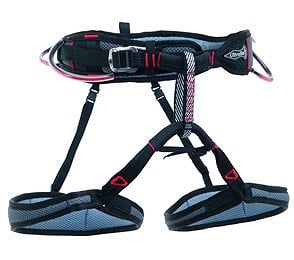
© UKC Gear |
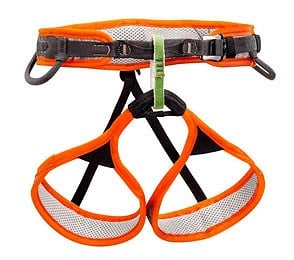
© UKC Gear |
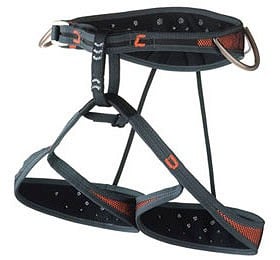
© UKC Gear |
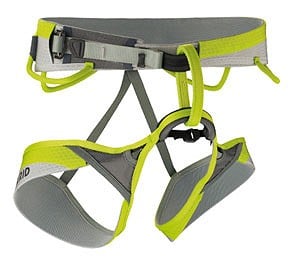
© UKC Gear |
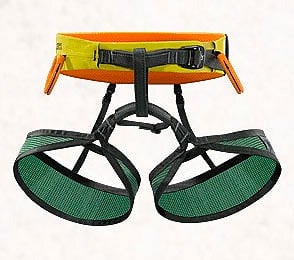
© UKC Gear |
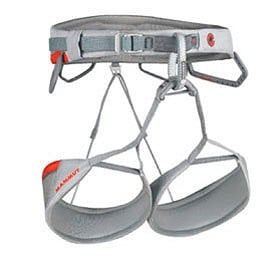
© UKC Gear |
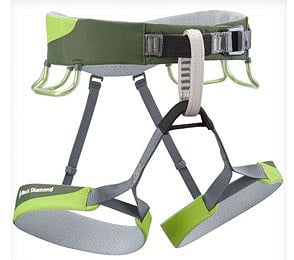


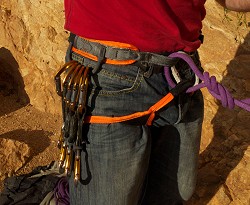

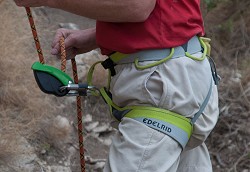
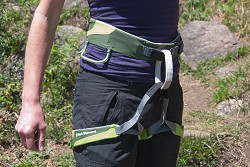
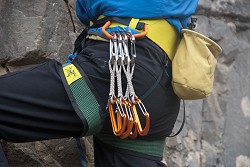
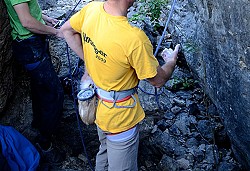


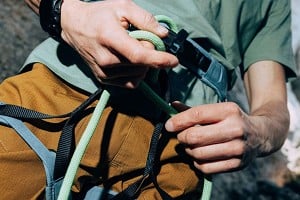
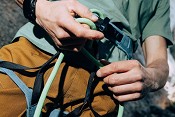
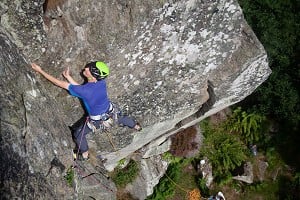
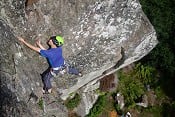
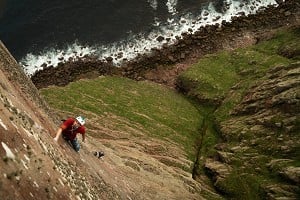

Comments